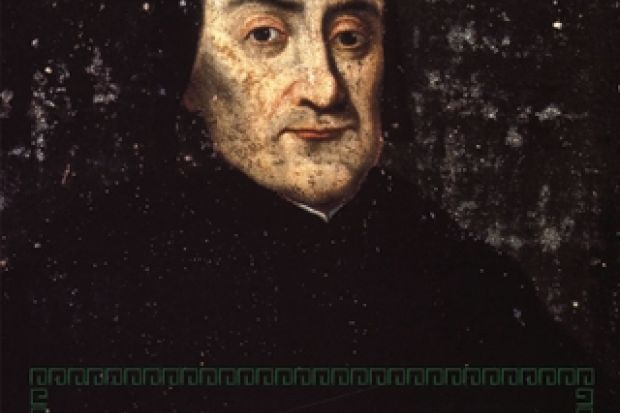The German Jesuit, Athanasius Kircher (1601/2-80), was one of the most prolific authors of the Baroque period. His Oedipus Aegyptiacus (1652-54) and celebrated Museum of Antiquities (the justly famous Musaeum Kircherianum) in the Collegio Romano, Rome, established him as an authority on things Egyptian (although much of the “Egyptian” stuff he collected was in fact Egyptianising, in the sense that it was made in Europe in the Egyptian style to satisfy a taste for Egyptomania from the time of Augustus onwards). Nikolaus Pevsner and Susan Lang, however, in their pioneering 1956 work on the Egyptian Revival (not cited by Daniel Stolzenberg) observed that such “authority” was founded “on thoroughly unsound foundations”.
Yet the distinguished French scholar and near contemporary, Nicolas-Claude Fabri de Peiresc, originally encouraged Kircher in his researches, and orchestrated his translation to Rome, but later began to have serious reservations about the Jesuit’s scholarship and treatment of sources. Nevertheless, Kircher was not alone in this respect among pre- Enlightenment scholars, especially those hamstrung by a rigorous censorship that not only banned but burned books that did not fit neatly into Roman Catholic orthodoxy. Indeed, he seems to have sailed close to the wind in many respects, probing aspects of occult belief and practice that could easily have landed him in rather more than hot water. Kircher’s attempts to decipher hieroglyphs drew upon Arabic, Coptic and Jewish texts (often with cavalier disregard for accuracy) and that pursuit alone could have caused problems for him at a time when the Counter-Reformation was in full swing, for in his studies he often treated non-Christian beliefs and rituals far more positively than was normally permitted.
However, it has to be said that as an uncritical accumulator of evidence, as Stolzenberg observes, he lavished more effort on the “outward appearance of his imposing scholarly apparatus than on the solidity of its internal supports”. His reliance on “Hermetic” texts, despite (or perhaps because of) the devastating critique of the Protestant philologist, Isaac Casaubon, which showed the Corpus Hermeticum to have been a pseudonym-ous production of the early Christian era rather than a work of remote antiquity, led him to shaky ground, and his reputation was further dented by his failure to carefully cite, or even acknow-ledge, sources, in the teeth of Peiresc’s admonitions. However, we must not forget that the revered deity of the Enlightenment, Isaac Newton, wrote a strange concoction on the Chronology of Ancient Kingdoms Amended (1728), and even Robert Boyle was not above failing to give credit due. It should be remembered that pre-Enlightenment scholars had to work within severely constrained frameworks in which biblical history and beliefs about magic and esoteric wisdom diluted, distorted and corrupted attempts to use empirical methods to arrive at truths. In the milieu of Baroque Rome, dispassionate wide-ranging research was severely restricted, with the zealots of the Holy Office of the Inquisition ever vigilant and eager to seek out heresies imagined or real, and the Index Librorum Prohibitorum proscribing anything not strictly conforming to what lay within officially approved parameters.
In readable, mildly engaging prose (although his repeated use of the phrase “Republic of Letters” soon grates), Stolzenberg has attempted to summarise Kircher’s hieroglyphic studies, seeing them properly within the teeming context of 17th-century investigations into the occult, paganism and oriental languages, but is always aware of suffocating restrictions placed on scholarly investigations at the time. His publishers have printed footnotes in their proper places (something all publishers worth their salt should do, rather than bunching them inconveniently at the end of the book), but despite the fact that this volume is about Kircher’s Oedipus Aegyptiacus, there are curious lacunae in the bibliography, for Kircher’s output in the context of Egyptianising influences on design has been ignored, despite the fact that there is available a considerable literature on that wonderful topic. Illustrations, although just about adequate, are more than a little on the murky side, which is a pity, and it would have been agreeable to have had more of them, as Kircher’s original publications were extraordinarily lavish, with fascinating decorations. The pictures in Stolzenberg’s Chicago tome should be compared with the superb reproductions of Kircherian material in Joscelyn Godwin’s Athanasius Kircher’s Theatre of the World brought out by Thames & Hudson in 2009: Chicago could have made a better fist of such marvellous material.
Register to continue
Why register?
- Registration is free and only takes a moment
- Once registered, you can read 3 articles a month
- Sign up for our newsletter
Subscribe
Or subscribe for unlimited access to:
- Unlimited access to news, views, insights & reviews
- Digital editions
- Digital access to THE’s university and college rankings analysis
Already registered or a current subscriber? Login
